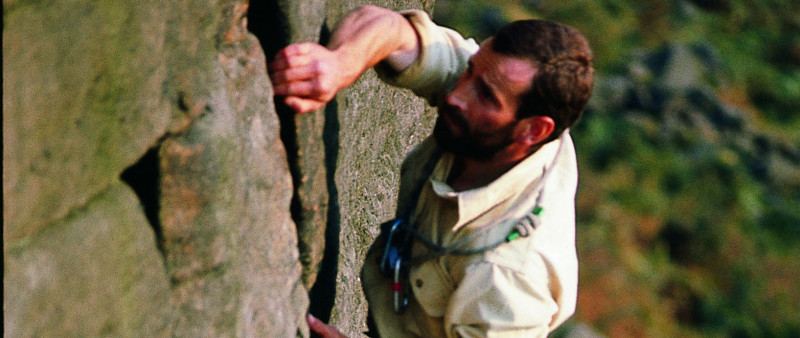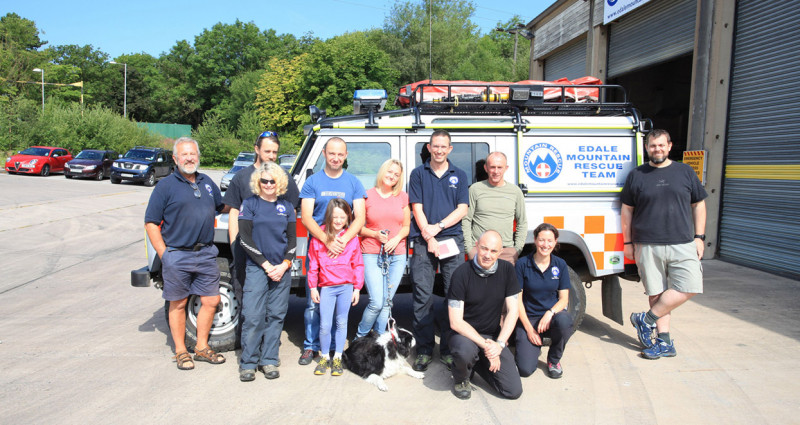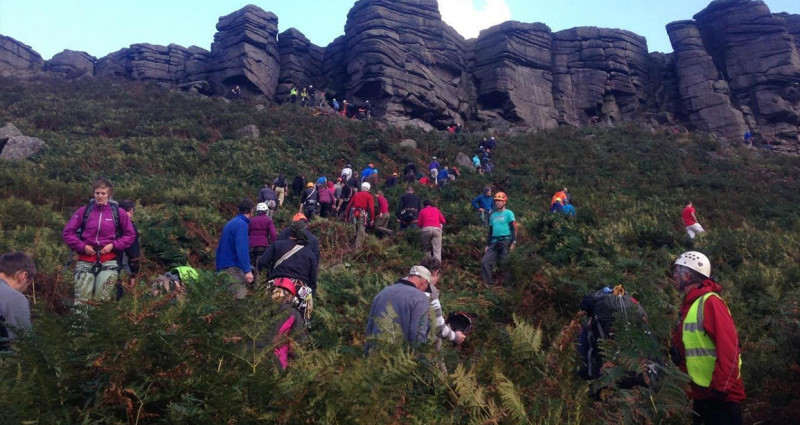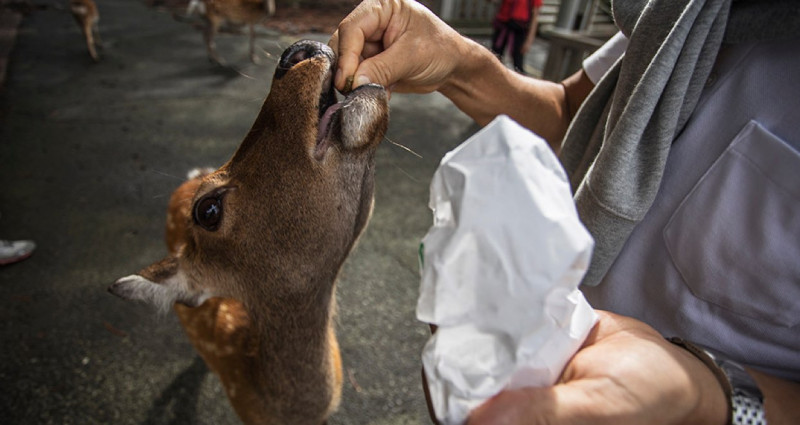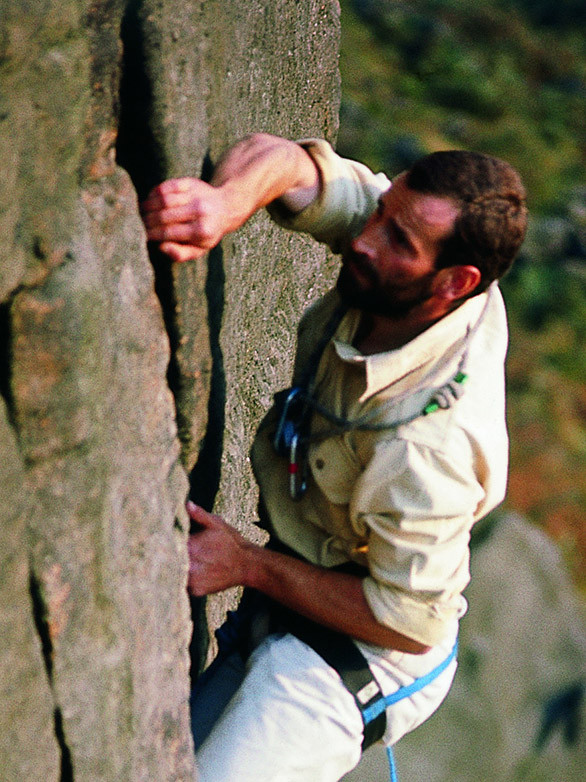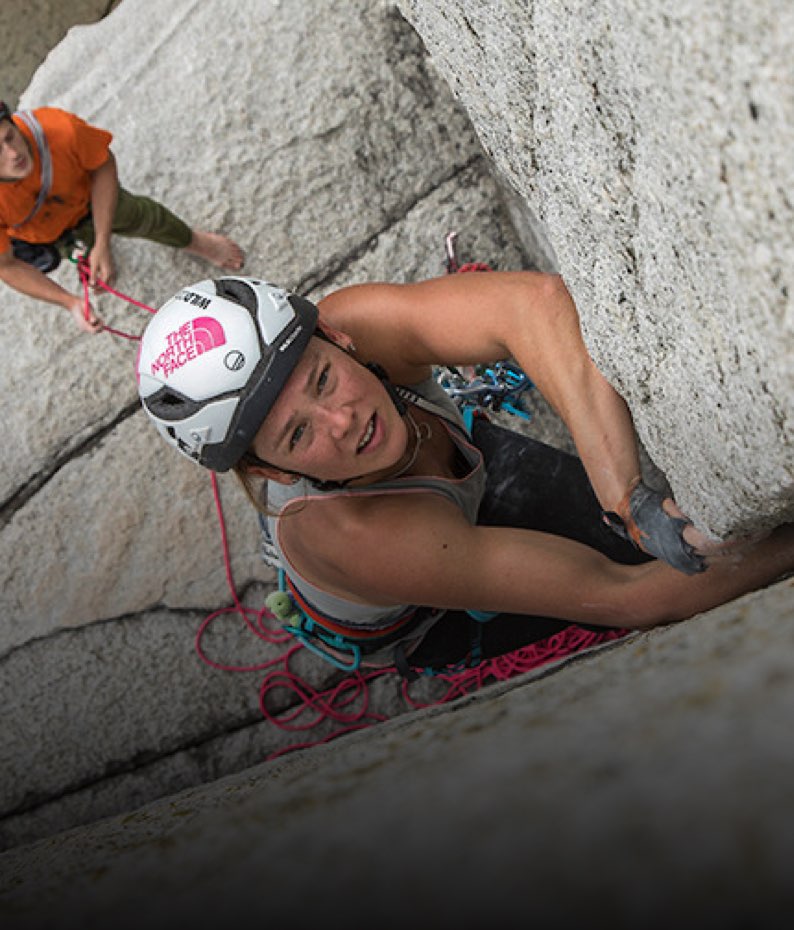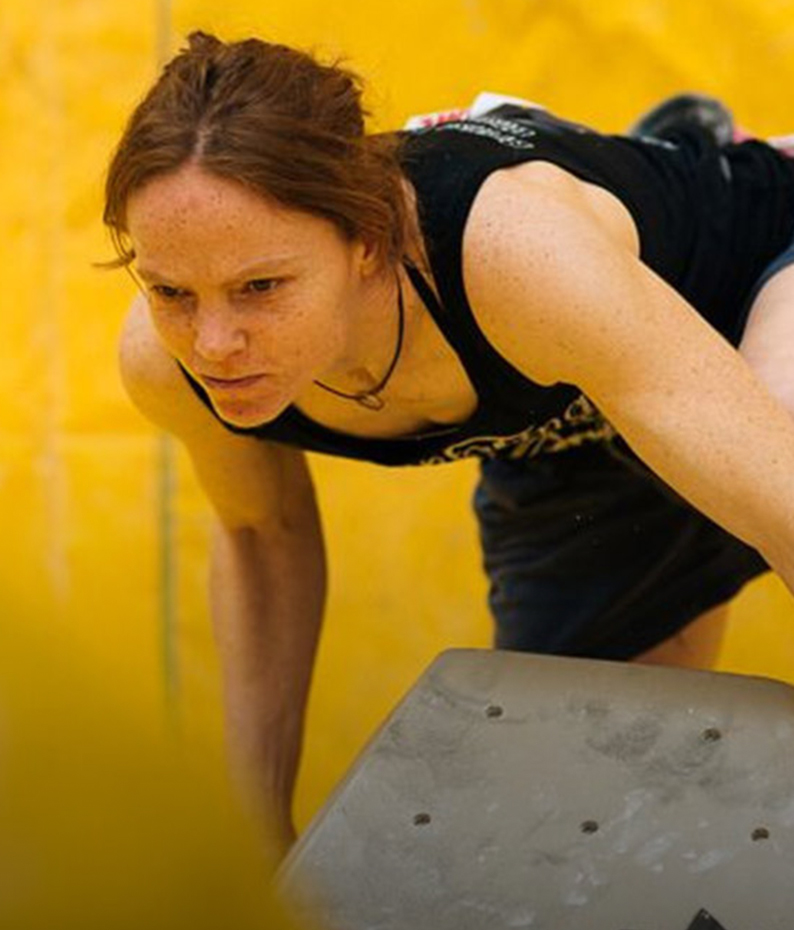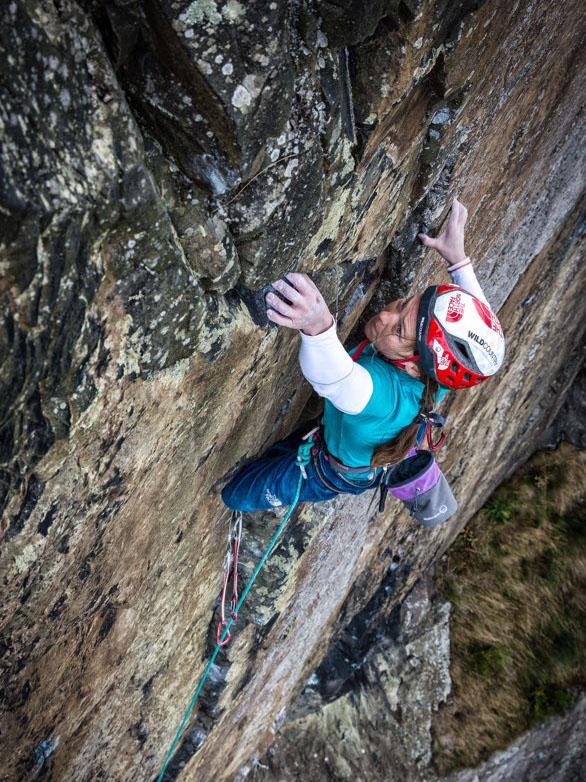La raccolta di fondi per l'Eliporto di Sheffield
Tutti i proventi dell'evento andranno direttamente all'Appello per l'eliporto, per finanziare una nuova pista di atterraggio vicina al Reparto di pronto soccorso del Northern General Hospital.
Essendo il tipico britannico bianco come un cencio, mi sentivo come uno spinacio appassito, bruciato dal sole. Ma darci dentro nel calore senza attrito non avrebbe fermato l'esplorazione di nuove vie e un'avventura infinita. Dopo aver trascorso 10 settimane in totale in due diverse escursioni alpinistiche in tutta la Norvegia, aprendo nuove vie e cercando pareti vergini in canoa con la mia ragazza Mari, sono entusiasta all'idea della prossima chance di tornarci.
Un viaggio all'insegna del sole non è esattamente quel che la gente immagina, quando dici che vai in Norvegia ad arrampicarti. Di certo non era neanche quello che mi aspettavo io, mentre mettevo in valigia calze di lana e piumino. Penso che molti associno la Norvegia a scalate sotto la pioggia e a muoversi nella boscaglia, ma in realtà non c'è quasi stato nulla di simile.
Matt Heason, direttore del festival, dice:
“Questo è il terzo anno che lo ShAFF
supporta la Sheffield Hospitals Charity e
siamo felici che Wild Country si unisca a
noi, per aiutarci nella raccolta fondi
dell'Appello per l'eliporto.
Con un terzo dei confini di Sheffield all'interno del Peak District, la città attrae gli atleti degli sport d'avventura, ma la realtà è che gli incidenti possono capitare e la risposta rapida offerta da un'eliambulanza potrebbe salvare potenzialmente molte vite. La nostra comunità di alpinisti, corridori e ciclisti ne trarrebbe gran beneficio, mentre il festival basato su questa comunità, ShAFF e Wild Country sono orgogliosi di sostenere l'appello.”
Steve Foster, direttore del marketing Wild Country, afferma: Wild Country sostiene con orgoglio questo appello, che sarà di beneficio a tutti gli appassionati di sport outdoor in visita al Peak District. Siamo consapevoli dell'esistenza del servizio di eliambulanza, ma non lo apprezziamo realmente, finché non ci riguarda da vicino. Senza le squadre di soccorso, l'eliambulanza e il team traumi all'NGH, l'incidente di Dionne sarebbe finito molto peggio. Tutti noi di Wild Country siamo rimasti profondamente scossi dall'accaduto e molto grati a tutti coloro coinvolti nel soccorso e nelle cure presso l'ospedale.
David Reynolds, direttore della Sheffield Hospitals Charity, dichiara: “Sono grato di cuore per l'appoggio fornito da ShAFF e Wild Country al nostro Appello per l'eliporto. Mi auguro che il loro sostegno incoraggerà i frequentatori del festival a fare un'offerta, dal momento che siamo vicini a raggiungere l'obiettivo finale. Avere l'accesso a una nuova struttura per l'eliporto è d'importanza vitale per tutti gli abitanti di Sheffield e dintorni. Chiunque tra noi potrebbe essere coinvolto in un incidente o emergenza medica e, in quei momenti, daremmo tutto per avere la miglior attenzione possibile, il più rapidamente possibile.”
Nel settembre 2014, Dionne Davis, membro del nostro staff, ha sperimentato in prima persona l'importanza del soccorso aereo, dopo essere caduta da circa 10 metri sullo Stanage Edge.
Ecco come Dionne racconta l'accaduto:
“Mentre cominciavo a capire che cos'era successo, le squadre di soccorso alpino avevano già il pieno controllo della situazione. Riuscivo a sentire le eliche degli elicotteri che si avvicinavano. Tutti gli alpinisti che quel giorno si trovavano in zona, si erano uniti a formare una catena umana, cominciando a passarmi nella barella fino all'elicottero. Per fortuna non avevo subito lesioni gravi, ma, se lo fossero state, l'eliambulanza sarebbe riuscita a salvarmi la vita. Non potrò mai ringraziare abbastanza l'eliambulanza, il soccorso alpino, lo staff dell'ospedale al completo e gli altri alpinisti per tutto quello che hanno fatto per me in quella circostanza.”
L'Appello per l'eliporto è stato lanciato nell'ottobre 2014 per raccogliere 2 milioni di sterline per costruire un nuovo eliporto presso il Northern General Hospital; restano ancora 198.000 £ per raggiungere l'obiettivo dei 2 milioni. Il nuovo eliporto assicurerà che i pazienti bisognosi di cure salvavita potranno venir trasferiti al Reparto di pronto soccorso entro pochi secondi dall'atterraggio, risparmiando tempo prezioso, poiché ogni secondo è cruciale, quando di affrontano lesioni traumatiche gravi.
Il dottor Stuart Reid, consulente in Medicina d'emergenza e medico capo di Traumatologia allo Sheffield Teaching Hospitals, dice: “Come uno dei 26 centri traumatologici del paese, riceviamo pazienti da un'area geografica estesa, tra cui lo Yorkshire meridionale e il Peak District nel Derbyshire settentrionale. Disporre di un eliporto a pochi secondi dall'ingresso significa che possiamo dedicarci prima ai pazienti, cosa che potrebbe fare tutta la differenza, perché ogni secondo conta davvero molto.”
“Quando qualcuno subisce un trauma con lesioni multiple o gravi, la velocità con cui riesce a ottenere aiuto medico può rappresentare la differenza tra la vita e la morte, ecco perché l'appello è così importante.”
Per ulteriori dettagli, visita: www.sheffieldhelipad.com
Per le richieste stampa ShAFF e Wild Country, contatta: Jenny Brown al +44 0777 928 1114 o [email protected], oppure visita www.shaff.co.uk.
Per la Sheffield Hospitals Charity, contatta Sarah Stables al +44 0114 271 1355 e [email protected].
1 ISLAND, 2 MONKS AND UNTOUCHED GRANITE
“Why did James and I pick a small dot on the other side of the planet?”
Because Yuji told us about it. The last time Yuji proposed us a trip, we ended up in Kinabalu, the now oh so famous mountain where untouched granite will overwhelm the climber. The Real Rock tour has thrown Kinabalu into fame, but 5 years ago, when we went there, no climber could even put it on the climbing
Kinkasan is a small island not far from Fukushima, on the north east side of Japan. It has 26km circumference and is inhabited by two monks. From Tokyo it is a six hour journey. Yuji didn’t say that much more: Kinkasan’s coast is covered with granite cliffs, and there is a Shinto shrine on it. Yuji mentioned as well the damages made by the tsunami…
We began our journey with next to no expectations about the climbing, and a big question mark for the rest. 3 days in the trip and I know exactly why we came: for Japan.
2 years ago we spent a week in this unique country and both James and I knew that we had to come back one day: how could I compare it? Well, the first time you taste wine, you have heard a lot about it. But you smell, and you only smell the alcohol, you taste and you can’t put words on it because wine is subtle, complicated and requests an education. You have to go back to it, learn to enjoy, differentiate and remember. Japan is maybe a little bit like wine.
There is this astonishing mix of modernity (the Japanese toilets and their multi jets, music and self cleaning options give you an idea of the immensity of your difference) and spirituality, respect, focus.
We arrived at Base Camp, the gym that Yuji opened 5 years ago in Tokyo, and I oscillate between marvel and shame. I am a pro climber, and most of the boulders are too hard for me, the Japanese climbers around me seem to evolve so effortlessly, like flying cats on the wall. But then you realise: the world championship have just finished in Paris and in the bouldering competition, 3 of the 6 medals are not only Japanese, but from Tokyo, from Base Camp. Yuji and his company helps the athletes become professional and they often climb together. Shall I repeat that? Half of the world’s medals come from one gym! Surely there is no wonder that Yuji owns that gym… But that is only just the very top of the iceberg, because behind this 3 medals, there are a lot of other athletes with an incredible level. I have never seen so many good, extremely good boulderers in one place. And I am a former competition climber, trust me, I know what I am talking about.
“Why are they so good?”
The answer is surely complicated but here are a few elements: climbing has become very trendy in Japan, with over a 100 gyms in Tokyo. The Japanese body type is perfect for climbing; light, powerful and explosive muscles. The Japanese constant pursuit of perfection pushes the athletes to train hard, just like everyone around them simply accomplished every task with perfection.
It was dry for the crossing, and after unpacking our bags at the shrine we bouldered on a nearby beach for 1 hour before the rain came. With so much rock to see and so little time, we hiked out anyway along the coast to search out potential lines. The rain became heavier, we became wetter, and after 4 soggy hours we returned to the shrine, hopes high but spirits low. We’d been preparing this trip since September 2015, putting the team together, finding funding from sponsors, organizing the local logistics, yet it would all be in vain if the weather didn’t brighten up.
A morning of rain gave us the excuse to sit down and record some interviews, though truthfully we had little to say as we’d done little climbing. Toru, ever the silent optimist finally dragged me out to the closest boulder spot during a break between two showers, and we were surprisingly able to climb! Toru lived up to his reputation of boldness and brilliance, making the first ascents of two of Kinkasan’s boldest and hardest problems. Finally things were looking up. The forecast was good for the following days, and group psyche could not have been higher. We began to plan our upcoming adventure and our first trip to the other side of the island – the area with the highest concentration of rock, and the biggest cliffs, but had to cut them short as bad news broke.
With my thirst for climbing temporarily quenched, we left the island in limbo, happy, yet sad, but knowing we’d be back in less than 24 hours. We passed the day visiting some of the worst tsunami affected towns in an effort to better understand what hardships the local people had to live through, and how they are moving forwards towards the future. It is one thing to watch the news from the comfort of your lounge back home, it is another thing entirely to see it first hand, and speak to the people who have lost everything - houses, possessions, loved ones!
Suddenly our troubles with the rain seemed embarrassingly small, and we remembered why we were actually here in the first place.
Our personal climbing desires must come second to the larger goal of showing this place to the world. Rain or shine, we have to get out there. Hike around, document the potential, and if in the end we are lucky, open up some new routes.


